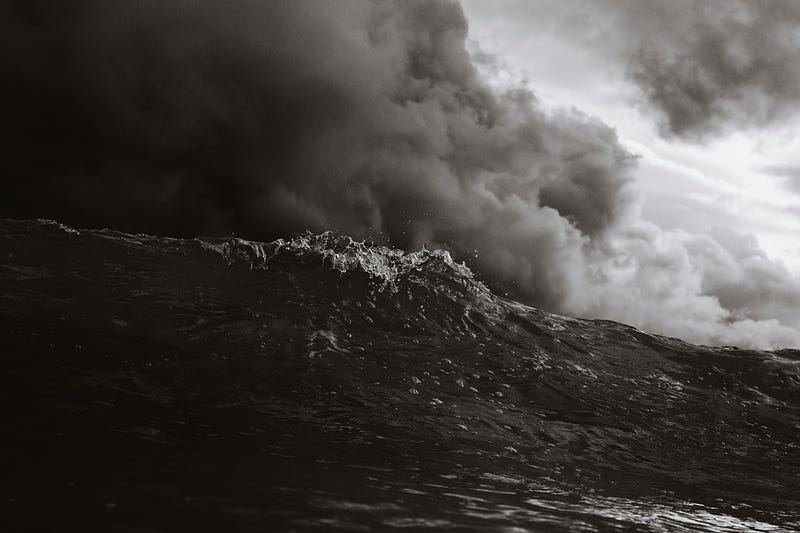A dark leviathan of hope and destruction
Around fifteen years ago, my aunt owned a small beach house in Cape May, New Jersey. It was a modest place. Probably quite overpriced for what it was. Yet, as a young teenager, taking family vacations there was a dream come true.
Cape May is a sleepy town. A Victorian carnival full of color and an antique smell to the air that doesn’t exist on the rest of the Jersey Shore. It is the tip of the coast. For a young boy, it was the last place on earth between the land and the sea.
I remember the worn blue siding of that beach house. The screened-in back porch. The old fence that surrounded a backyard littered with rocks, sand, and any grass that dared to grow among them. Yet, there was one thing that has never left me all these years later.
In the main bedroom of the house, a small painting of the ocean hung on the far wall. I don’t remember exactly what the artist painted, but I remember the words written across the top of the art.
“When I grow weary, I go to the sea.”
It’s a simple phrase. Probably painted across thousands of knick knacks littering stores on shorelines. But for the past fifteen years, whenever I go near the ocean, I mumble these words to myself. Perhaps it’s a reminder of simpler times. Perhaps it’s nothing more than a weird lingering memory.
Maybe there is something about the sea that makes me realize the weariness in my bones. Like its old, eldritch power emanates from somewhere deep in the vastness of its abyss. It’s terrifying and awe-some. It calms me.
For my entire life growing up, I would go to the sea on the east coast of the United States. The shore was the place of countless summer memories. There was mostly nothing but joy in those reveries.
When I moved to Japan, there was a vivid moment where I stood on the rocky shore near Hachinohe City. I looked out at the blue water from the top of the cliff. I wondered how many rocks there were below me, and how many more were hidden under the waves.

The green hue of the sea wasn’t there. The soft, sandy beaches had been replaced for a more violent coastline, created by years and years of assault. This sea was wild and beautiful. It wasn’t my sea; it was a different leviathan. A beast unknown to me. But how infantile of me to think I could own even a small part of the sea.
This sea ravaged the coastline in 2011 during the Tohoku earthquake and tsunami. It killed around 20,000 people. Yet this sea is also the lifeblood of Hachinohe. The seafood, the boats that sway in the harbors, the old men fishing off the pier.
I wondered at once how something could be both so beautiful and so destructive.
But, of course, the sea doesn’t have these thoughts. The sea is. And those waves that batter the rocky shore will be here long after I am gone.
In its seeming infinity, the sea is both healer and destroyer. When I look at it now, it calms me. It’s stringent air fills my lungs and my weary heart is eased.
But, I also see images of the tsunami. The black monolith that swallowed up land and and people without thought or reason. That dark leviathan also exists within the depth of the sea. The ability to summon hell onto the earth before us.
Perhaps this is natural balance. To give and to take.
It is true that when I grow weary I go to the sea. Yet, to look out upon the vastness without a hint of scared reverence is ill-advised.
I’ve learned to fear the sea, just as I love it.
Thanks for reading. For more musings about life in Japan, Japanese cultural, and the occasional poetic wax about the sea, follow me here.
Feel free to subscribe to my newsletter to get a weekly update about something interesting I’ve found in Japan.





